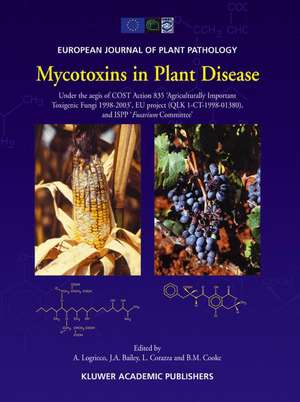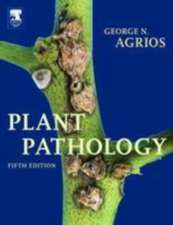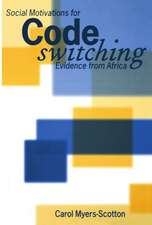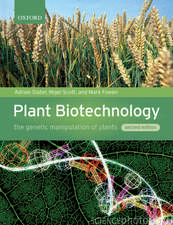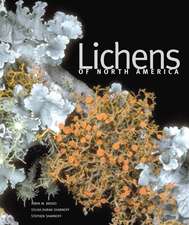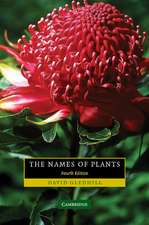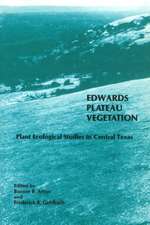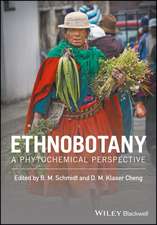Mycotoxins in Plant Disease: Under the aegis of COST Action 835 ‘Agriculturally Important Toxigenic Fungi 1998-2003’, EU project (QLK 1-CT-1998-01380), and ISPP ‘Fusarium Committee’
Editat de A. Logrieco, John A. Bailey, L. Corazza, B.M. Cookeen Limba Engleză Hardback – 31 oct 2002
| Toate formatele și edițiile | Preț | Express |
|---|---|---|
| Paperback (1) | 636.63 lei 6-8 săpt. | |
| SPRINGER NETHERLANDS – 23 aug 2014 | 636.63 lei 6-8 săpt. | |
| Hardback (1) | 564.27 lei 38-44 zile | |
| SPRINGER NETHERLANDS – 31 oct 2002 | 564.27 lei 38-44 zile |
Preț: 564.27 lei
Preț vechi: 705.34 lei
-20% Nou
Puncte Express: 846
Preț estimativ în valută:
107.99€ • 111.56$ • 89.87£
107.99€ • 111.56$ • 89.87£
Carte tipărită la comandă
Livrare economică 21-27 martie
Preluare comenzi: 021 569.72.76
Specificații
ISBN-13: 9781402008719
ISBN-10: 1402008716
Pagini: 148
Ilustrații: 734 p. 1 illus.
Dimensiuni: 195 x 260 x 14 mm
Ediția:Reprinted from EUROPEAN JOURNAL OF PLANT PATHOLOGY, 108:7, 2002
Editura: SPRINGER NETHERLANDS
Colecția Springer
Locul publicării:Dordrecht, Netherlands
ISBN-10: 1402008716
Pagini: 148
Ilustrații: 734 p. 1 illus.
Dimensiuni: 195 x 260 x 14 mm
Ediția:Reprinted from EUROPEAN JOURNAL OF PLANT PATHOLOGY, 108:7, 2002
Editura: SPRINGER NETHERLANDS
Colecția Springer
Locul publicării:Dordrecht, Netherlands
Public țintă
ResearchCuprins
Foreword; A.F. Logrieco, L. Corazza, A. Bottalico. Toxigenic Fusarium species and mycotoxins associated with maize ear rot in Europe; A. Logrieco, G. Mulè, A. Moretti, A. Bottalico. Toxigenic Fusarium species and mycotoxins associated with head blight in small-gram cereals in Europe; A. Bottalico, G. Perrone. Deoxynivalenol, nivalenol and monififormin in wheat saniples with head blight (scab) symptoms in Poland (1998-2000); M. Tomczak, H. Wisniewska, L. Stepien, M. Kostecki, J. Chelkowski, P. Go1inski. Ochratoxin A in cereals, foodstuffs and human plasma; A. Rizzo, M. Eskola, F. Atroshi. Ochratoxin A in grapes and wine; P. Battilani, A. Pietri. Ear rot susceptibility and mycotoxin contamination of maize hybrids inoculated with Fusarium species under field conditions; M. Pascale, A. Visconti, J. Chelkowski. Studies on the infection process of Fusarium culmorum in wheat spikes: Degradation of host cell wall components and localization of trichothecene toxins in infected tissue; Z. Kang, H. Buchenauer. Production of beauvericin by different races of Fusarium oxysporum f. sp. melonis, the Fusarium wilt agent of muskmelon; A. Moretti, A. Belisario, A. Tafuri, A. Ritieni, L. Corazza, A. Logrieco. Epidemiology of Fusarium infection and deoxynivalenol content in winter wheat in the Rhineland, Germany; B. Birzele, A. Meier, H. Hindorf, J. Krämer, H.-W. Dehne. Role of deoxynivalenol in aggressiveness of Fusarium graminearum and F. culmorum and in resistance to Fusarium head blight; Á. Mesterházy. Relationship between growth and mycotoxin production by Fusarium species, biocides and environment; N. Magan, R. Hope, A. Colleate, E.S. Baxter. Genetic analysis of the role of trichothecene and fumonisinmycotoxins in the virulence of Fusarium; R.H. Proctor, A.E. Desjardins, S.P.McCormick, R.D. Plattner, N.J. Alexander, D.W. Brown. Saccharomyces cerevisae and Arabidopsis thaliana: Useful model systems for the identification of molecular mechanisms involved in resistance of plants to toxins; R. Mitterbauer, G. Adam. Mycotoxin genetics and gene clusters; G.S. Sidhu. Biosynthesis of depsipeptide mycotoxins in Fusarium; T. Hornbogen, M. Glinski, R. Zocher. Secretion of natural and synthetic toxic compounds from filamentous fungi by membrane transporters of the ATP-binding cassette and major facilitator superfamily; L. Stergiopoulos, L.-H. Zwiers, M.A. De Waard.
